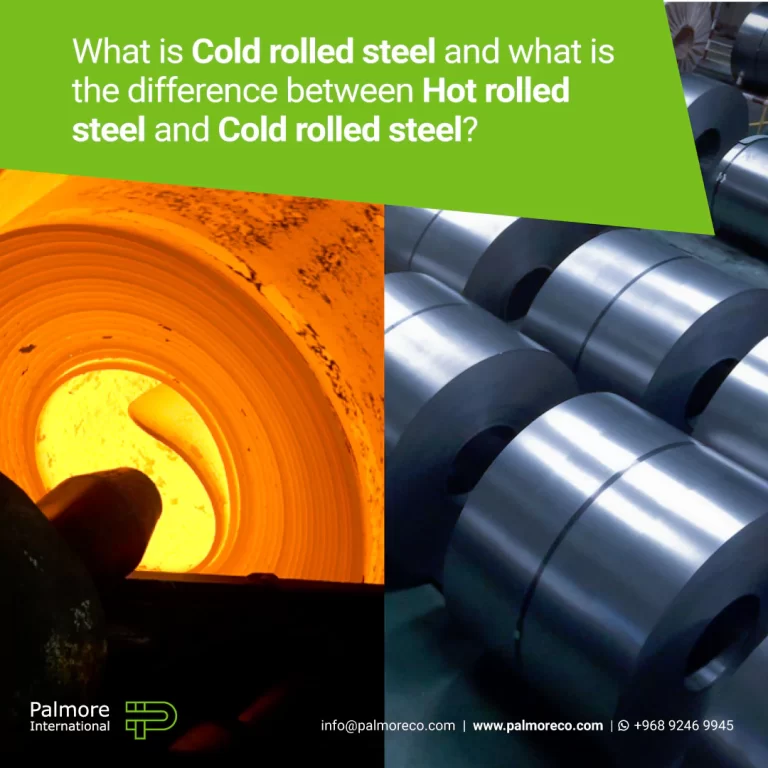
What is cold rolled steel?
Cold rolled steel or CRS, is actually Hot rolled steel that has been further processed. Doing more polishing makes CRS usually harder and stronger than standard hot-rolled steels. To create a cold rolling state, after the hot rolled steel has cooled, it is rolled again. But this time, the rolling is done at room temperature. The purpose of re-rolling is to achieve more precise dimensions and better surface quality.
The term cold rolled is incorrectly used for all steel sections. Cold rolled, on the other hand, refers only to sheets (sheets and plates) that are pressed between rollers and does not include rods or tubes that are stretched. During the cold rolling process, when the metal is subjected to mechanical pressure, permanent changes occur in the crystal structure of the metal. These changes increase the strength of the metal and often improve the corrosion resistance. Surface and appearance improvements (in terms of aesthetics) and improved dimensional accuracy are other benefits of the cold rolling process.
Cold rolled steel polishing processes
After rolling at room temperature, the steel is subjected to annealing or heat rolling (tempers rolling) for further processing. This process produces a low tolerance steel cross section.
Tempering is usually done after annealing and rinsing with acid. Tempering is done with the aim of improving the smoothness of the plate surface and minimizing any tendency to stretch, strain and flute (flute) and create a surface with a special texture.
Cold finishing is done on the bars that are subjected to cold rolling. cold finishing includes the following steps:
(cold drawing and / or turning)
(grind)
(Polishing)
Cold finishing leads to increased product yield and has four important advantages:
Cold drawing: Increases tensile strength and often eliminates costly heat treatment. Cold drawing is used to make light furniture profiles.
Turning eliminates surface imperfections.
(grind) Reduces the tolerance range from the original tolerance.
Polishing also improves the surface.
All these steps make the products of cold rolling, compared to hot rolling, better quality and have a cleaner surface in appearance and closer to the ideals. On the other hand, these treatments and overpolishings can cause internal tension or stress in the material. Therefore, if the steel section is not pressed before cutting, grinding and welding, there is a possibility of unpredictable torsion.
Because of the increased carbon content, cold rods are usually more difficult to work with than hot rolled types. But this is not the case with sheets. The amount of carbon in cold rolling sheets is low; For this reason, they are usually annealed. Annealing makes the metal softer and improves its forming ability.
Read this article
Hot rolling and cold rolling
What are the specifications of Cold rolled steel?
Cold rolled steel is often identified by the following characteristics:
Better appearance surface (in terms of beauty).
Low tolerance.
Smooth surface that has a greasy touch.
Boxes of profiles with a square-rectangular cross-section are completely sharp and have distinct edges and corners.
The pipes and profiles obtained from this process are more uniform and more direct and smooth.
Advantages of Cold rolled steel
Cold rolled steel products are more expensive due to the additional processing that is done on them. On the other hand, they have the following advantages:
Ideal for precision technical applications.
Due to the good appearance surface, they are suitable in cases where beauty is important.
In terms of physical properties, they are harder and stronger than standard hot rolled steels.
Because steel rolling sections are formed at low temperatures, the hardness of the steel increases.
Formation at low temperatures makes it resistant to breakage, stretching and deformation.
In general, cold rolled products are used in any project where low tolerance, good surface or appearance conditions, focus and smoothness are the main goals.
What is the difference between Hot rolled steel and Cold rolled steel?
The steel production process has a significant impact on the quality and efficiency of the product; Even if the grade and specifications of the original steel are the same. Therefore, the steel produced during the hot rolling process is different from the steel produced during the cold rolling. The main difference between the two is related to the heat treatment. The steel shrinks slightly as it cools. Because hot rolled steel cools after processing, there is less control over its final shape, making it less suitable for precision applications. Steels with different grades and specifications can be hot rolled or cold rolled; Including base carbon steels and other alloy steels.
The difference between hot and cold steel includes the following:
Price: Hot rolled steel is often cheaper than cold rolling steel.
Temperature: Hot rolled steel products are produced at high temperatures (usually above 1700 ° F) and cold rolling products at room temperature (about 24 ° C).
The hot rolling process begins with heating a steel ingot or a large rectangular metal plate called a ticket. But in cold rolling, the rolling process begins with changes in the surface and thickness of the steel plate that was previously produced, and continues.
Control the final size and shape of the product: When the steel cools, it shrinks slightly. Therefore, the final size and shape of the hot products are less controllable.
Application: Hot rolling steel is used in cases where the exact shapes and dimensions are not important (such as construction). But the cold type is used in precise applications (in terms of dimensions) and the need for high strength.

